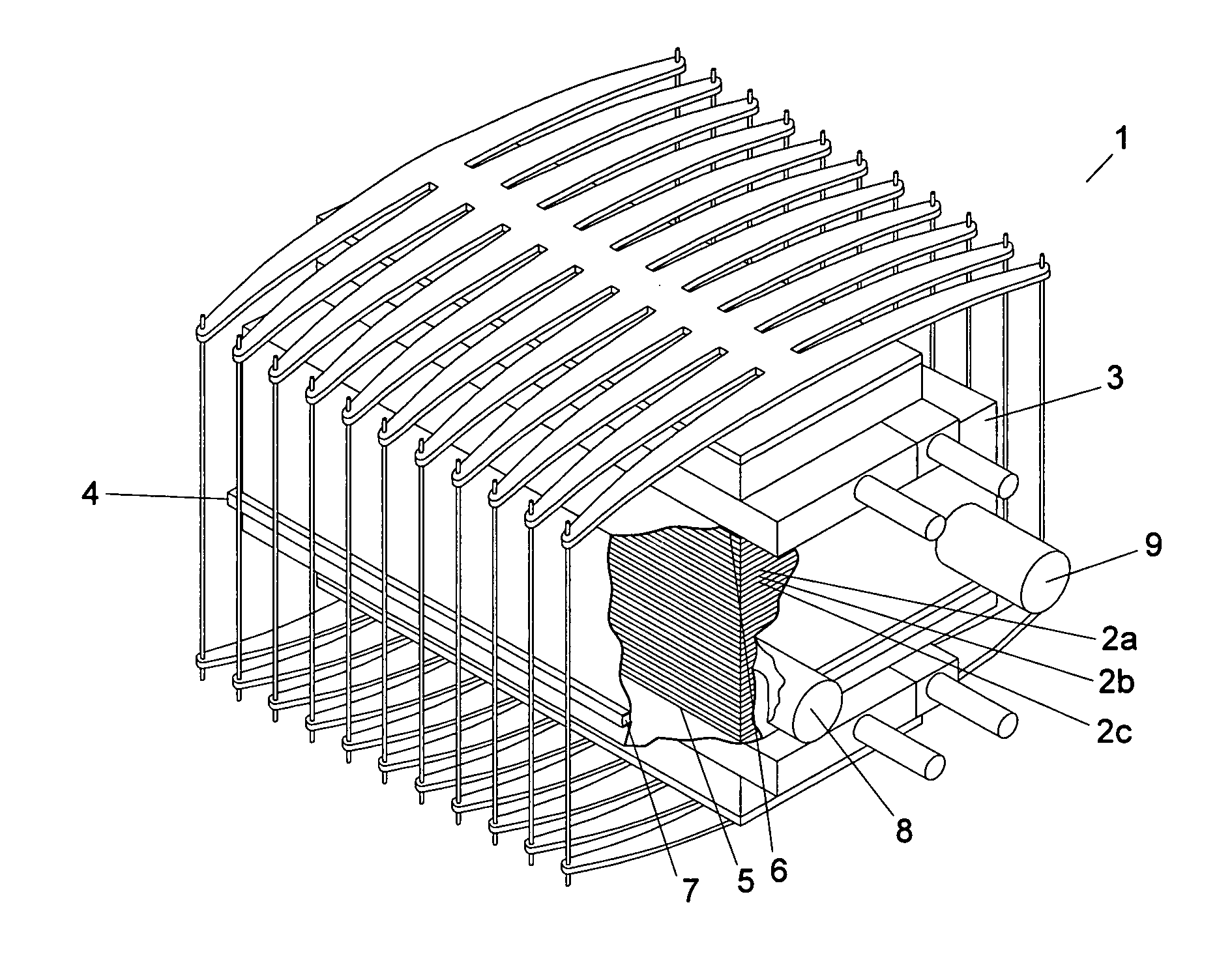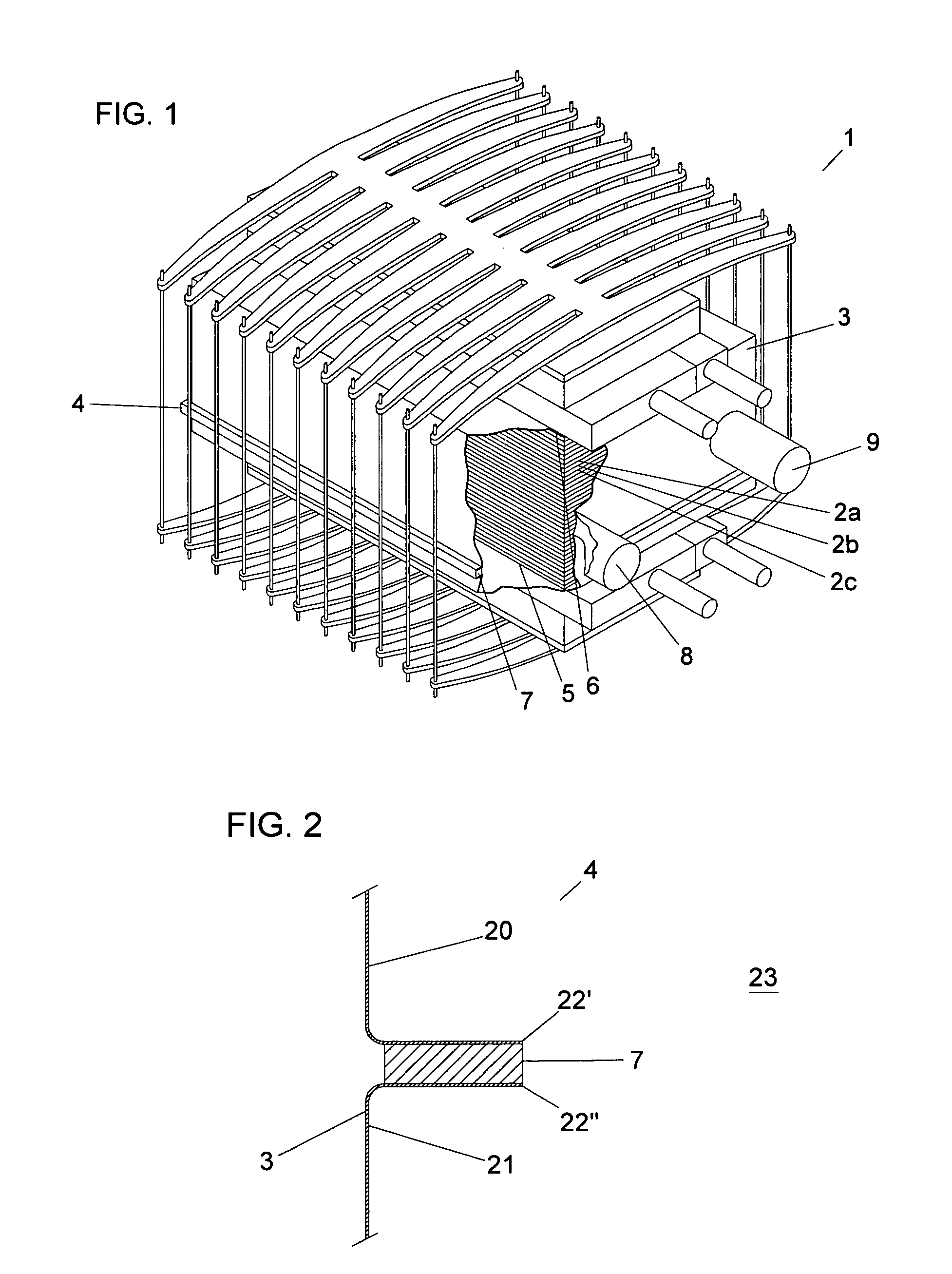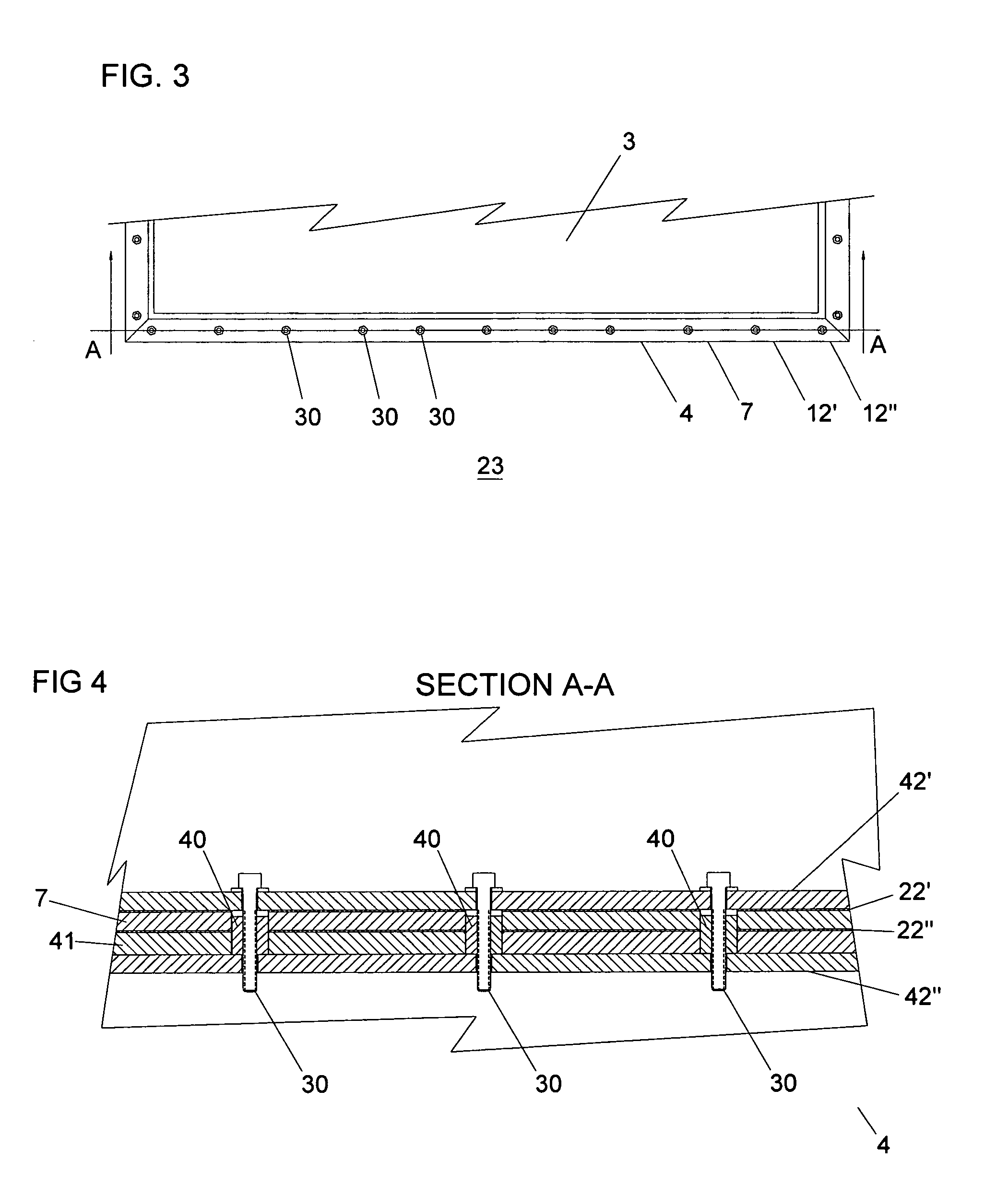Method and apparatus for dielectric isolation of fuel cells
- Summary
- Abstract
- Description
- Claims
- Application Information
AI Technical Summary
Benefits of technology
Problems solved by technology
Method used
Image
Examples
Embodiment Construction
[0036]FIG. 1 illustrates a fuel cell stack 1 such as a fuel cell stack described in U.S. Pat. No. 6,670,069 hereby incorporated by reference in its entirety for all purposes. The fuel cell stack 1 includes a plurality of individual cells represented by 2a, 2b, 2c stacked upon one another. The fuel cell stack 1 is positioned within an enclosure 3 such that the fuel cell stack is substantially or entirely enclosed within the enclosure. Configurations and dimensions for enclosures are known to those of skill in the art and include those described in U.S. Pat. No. 6,670,069. The enclosure is configured to be in fluid communication with external inlet manifolds and external outlet manifolds of the plurality of individual fuel cells represented by 2a, 2b, 2c. As can be seen in FIG. 1, the enclosure is contacted by a compression assembly having an upper plate and a lower plate with the upper plate and lower plate being connected by plurality of fastening elements. Compression assemblies, i...
PUM
 Login to View More
Login to View More Abstract
Description
Claims
Application Information
 Login to View More
Login to View More - R&D
- Intellectual Property
- Life Sciences
- Materials
- Tech Scout
- Unparalleled Data Quality
- Higher Quality Content
- 60% Fewer Hallucinations
Browse by: Latest US Patents, China's latest patents, Technical Efficacy Thesaurus, Application Domain, Technology Topic, Popular Technical Reports.
© 2025 PatSnap. All rights reserved.Legal|Privacy policy|Modern Slavery Act Transparency Statement|Sitemap|About US| Contact US: help@patsnap.com



